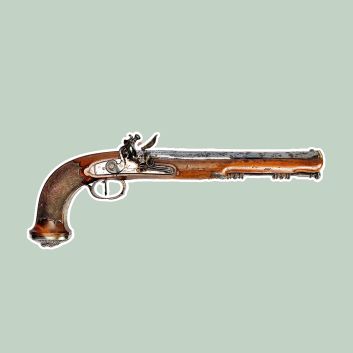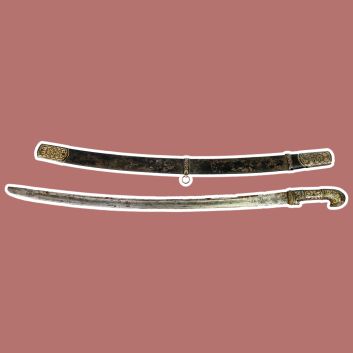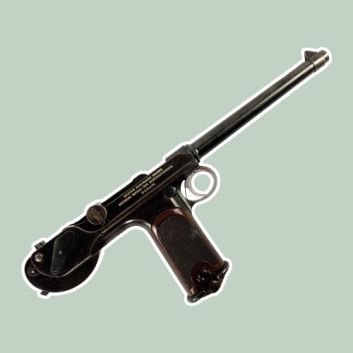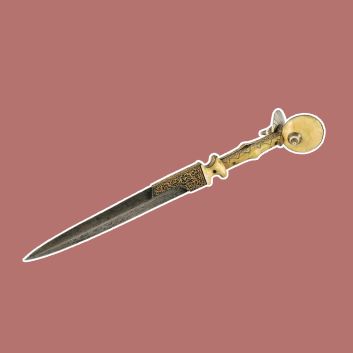Rating and value of antique flintlock pistols

If you own a flintlock pistol and would like to know its value, and if you don't know, the period and model of your gun, our state-approved experts and auctioneers will offer you their appraisal services. Our specialists will carry out a free appraisal of your weapon, and provide you with a precise estimate of its value on today's market. Then, if you wish to sell your property, we'll guide you towards the best possible arrangement to obtain the optimum price.
Rating and value of flintlock pistols
Flintlock pistols are highly sought-after by collectors. However, price differences can be considerable, depending on model and state of preservation. Nowadays, prices for these objects can rise considerably under the auctioneer's hammer. Buyers from all over the world are interested in the sale of certain rare pieces. The price at which they are sold on the art market ranges from €240 to €1,700, at the moment - a considerable difference, but one that says a lot about the value that can be attributed to these weapons. The box that belonged to Tolstoy, including two flintlock pistols made by Nicolas Boutet, sold for €120,000, whereas its estimate was between €120,000 and €150,000.
Value order ranging from simple to prestigious
Gun type | Results |
|---|---|
Reproduction flintlock pistol | From €10 to €100 |
Pistolet Le Page | From €4,000 to €67,000 |
Pistolet Boutet (Versailles manufacture) | From €1,000 to €120,000 |
Pistol made of precious materials (gold, gems) | From €2,000 to €226,840 |
Response in less than 24h
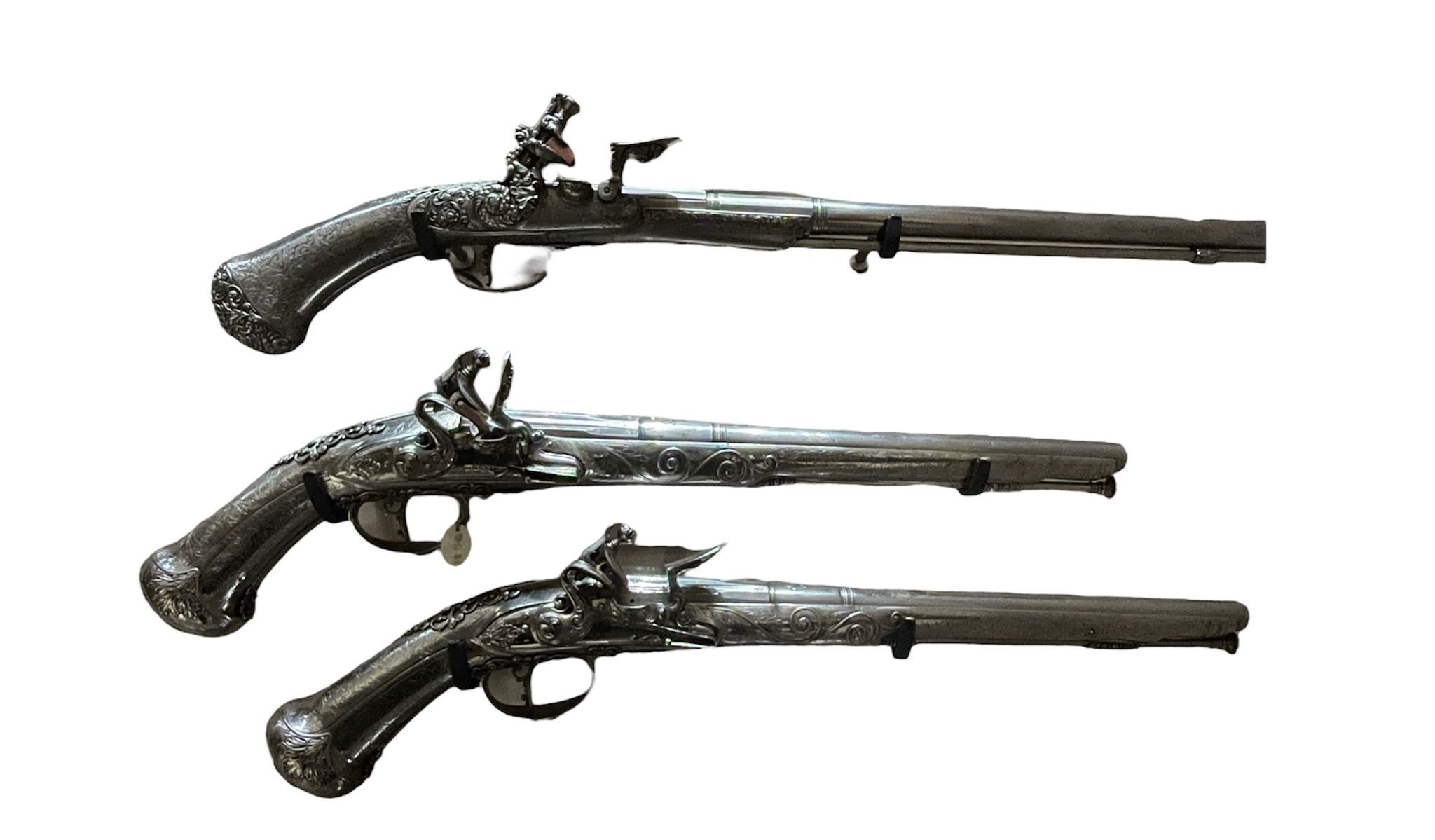
The flintlock pistol: definition
A flintlock pistol is an antique firearm that uses a flint-based firing mechanism to ignite gunpowder, propelling a projectile out of the gun's barrel. It operates on several components:
1. Barrel: The flintlock pistol features a barrel, a metal tube in which the projectile (usually a bullet) is placed. At the rear end of the barrel is a small cavity called the "powder chamber" where the gunpowder charge is inserted.
2. Powder chamber: The gunpowder charge is measured and poured into the powder chamber. This powder is highly flammable and acts as a propellant for the projectile.
3. Firing mechanism: The firing mechanism of a flintlock pistol consists of several essential parts:
- Flint: A piece of flint is attached to a movable jaw, called a hammer, located at the rear of the weapon.
- Dog: The dog is held in the rear position by a spring. When released, it moves rapidly forward.
4. Primer: A small amount of percussion powder, called primer, is placed in a cavity called the bassinet. The basin is located close to the dog's jaw, so that when the dog moves forward, the flint comes into contact with the primer.
5. Firing: When the shooter pulls the trigger, the hammer is released and moves rapidly forward. The flint, attached to the hammer, comes into contact with the primer in the pan. The impact between the flint and the primer creates a spark, which in turn ignites the gunpowder charge in the barrel's powder chamber.
6. Detonation: When the gunpowder charge ignites, it produces a high-pressure burning gas. This gas is confined within the barrel, causing a sudden increase in pressure inside the gun. This pressure pushes the projectile out of the barrel with great force, launching the shot.
The flintlock pistol mechanism is a classic example of a mechanically-fired firearm. Although this technology is now obsolete, it played an essential role in the history of firearms and preceded the development of modern firearms, such as centerfire and metal-cartridge firearms.
The success of flintlock pistols in collections
Flintlock pistols are very popular at auction, as they are a sought-after collector's item. Production was very high, as this mechanism was used for a long time and equipped many armies.
The more famous and esteemed the model, the higher the value of the weapon. This was the case with Tolstoy's pistols and Napoleon I's le Page pistols. On the auction market, most flintlock pistols date back to the 19th century.
Reasons to auction a flintlock pistol
If you own a flintlock pistol or other model, and you don't know how to sell it, auctions are one solution. Many collectors are looking for older models.
These objects are not just weapons, but a historical testimony to the scientific evolution of weapons design.
Knowing the value of a flintlock pistol
If you own a flintlock pistol from any period and would like to know its value, don't hesitate to request a free appraisal using the form on our website. A member of our team of experts and chartered auctioneers will contact you promptly with an estimate of your item's market value, and provide you with all the relevant information. If you wish to sell your property, our specialists will also be on hand to help you find alternatives for selling it at the best possible price, taking into account market trends.
Response in less than 24h
Related topics
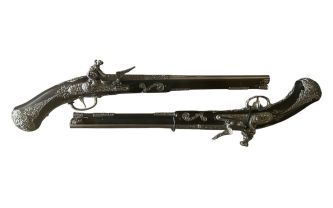
Rating and value of 1st Empire roller pistols
1st Empire spinning-wheel pistols are highly prized historical weapons at auction. Their high value makes them highly prized.
Read more >

Rating and value of hussar sabres, cavalry
Hussar sabers are bladed weapons worn by cavalry soldiers known as hussars. They are highly prized at auction.
Read more >
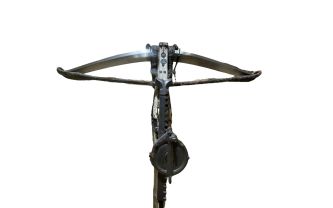
Rating and value of crossbows
Crossbows are sought-after antique weapons at auction, and can fetch high prices. Their value is fairly stable. Estimate in 24h
Read more >
Secure site, anonymity preserved
State-approved auctioneer and expert
Free, certified estimates
